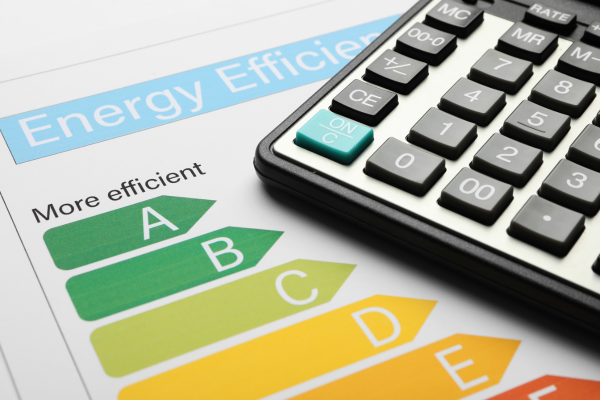Decarbonising higher education - the investment challenge
As the global cost of climate change becomes more apparent, the UK remains committed to achieving net zero emissions by 2050.
To achieve this goal, the government and press have been vocal about how private businesses and households can meaningfully drive down their carbon emissions. Equally, universities and higher education (HE) institutions have an important role to play in meeting carbon reduction targets.
In 2021, over one thousand universities and HE colleges worldwide pledged to become completely carbon neutral by 2050, with some institutions aiming to decarbonise as quickly as 2030. This list includes 168 UK institutions. While this ambition is laudable, it nonetheless represents a series of logistical and financial hurdles in a sector that continues to struggle for financial solvency.
According to Times Higher Education, almost half of all vice-chancellors expect their institutions to be in a financial deficit in 2024. In order to fund the necessary infrastructure to achieve net zero, institutions therefore need specific, tailored finance programmes to ease the burden of green investment.
The carbon cost of higher education
The HE sector is a substantial contributor to global emissions. Data from the Higher Education Statistics Agency demonstrates that 133 UK universities accounted for 1.4 million tonnes of carbon dioxide emissions between 2021 and 2022. While two-thirds of those managed to decrease their emissions over the past year, experts warn of “patchy” progress within the HE sector that is failing to keep pace with current targets and the greater climate emergency.
Professor David Reay, director of the Edinburgh Climate Change Institute, told Times Higher Education that institutions cannot rely wholly on the decarbonisation of the national electricity grid. Professor Reay reiterated the importance of “grasping the nettle of institution-wide enhancements to the energy efficiency of buildings, equipment and usage”.
Inevitably, this involves substantial investment. “This is not cheap,” Reay warned, “and in these straitened times the capital costs of things like building retrofit risk being put off, even though the savings over the longer term can far outweigh these costs”.
The specific challenges of HE buildings
According to the International Energy Agency, in order to meet net zero targets, not only must all new buildings be zero-carbon ready, but 20% of existing stock must be retrofitted for carbon neutrality by 2030. While this represents a challenge for all sectors, it is particularly demanding for the HE sector.
The UK is home to some of the oldest and most prestigious university campuses in the world. Retrofitting the medieval architecture of Britain’s oldest universities is an elaborate undertaking that requires a great deal of capital investment.
There are over 600,000 historic buildings in commercial use throughout the UK, accounting for almost a third of all commercial buildings. HE institutions have an opportunity to lead the charge and set an example for others.
Smart building initiatives and their impact on emissions
The term “smart building” refers to a building that makes use of available technologies to make its operations more efficient and economical. There are already some very impressive examples of HE institutions that have embraced new technologies.
The University of Birmingham, for instance, partnered with Siemens in 2021 to become the first university to implement a large-scale Internet of Things (IoT) rollout, installing 23,000 IoT sensors across its Edgbaston campus. This measure will provide invaluable insights into building occupancy, so that the university can manage power and heating more effectively. This is projected to reduce emissions across all campuses by nearly 3,000 tonnes of CO2 per annum.
In an era defined by inflated fuel prices, investment in green infrastructure can not only drive down carbon emissions but also drastically reduce operational spending, reducing energy use by up to 40%.
Financing decarbonisation
At a time when almost half of all UK universities anticipate a financial deficit, it is easy to see why HE institutions may baulk at the cost of decarbonisation. Accounting specialist Grant Thornton calculates the cost of decarbonising the UK’s HE sector at £37.1 billion. £25.4bn of this will be spent on decarbonising supply chain emissions, while £6.56bn will go towards built environment emissions and £5.14bn for transport and travel.
The UK government’s sustainability and climate change strategy acknowledges that school and university buildings account for 36% of total UK public sector building emissions. While universities may bid for a share of a £230 million fund to facilitate low-carbon energy upgrades for public sector buildings, this still leaves a significant shortfall.
Specialist financiers are poised to bridge the gap, with financing solutions that can be tailored to the specific needs of an organisation. Buildings-efficiency-as-a-service (BEaaS), for instance, is a finance arrangement that can be leveraged either at the component or larger building level to facilitate investment in infrastructure without endangering cash flow. This arrangement aligns the cost of the technology with the expected rate of benefit.
This means that institutions will not need to make large upfront payments, instead spreading the cost of investment over a flexible period. The operational savings facilitated by this green investment can further help to offset the cost of investment, in some cases paying for zero-carbon renovations in their entirety. As well as ameliorating upfront costs, these agreements often include guarantees based on expected energy efficiency outcomes. This further mitigates the risk borne by HE institutions.
An opportunity to lead the way
The operation of buildings accounts for 30% of final energy consumption worldwide, and 26% of all global energy-related emissions. Reducing this footprint can therefore seriously help to meet environmental targets. With the right financial arrangements in place, HE institutions can afford to be much more proactive in meeting their most ambitious targets for carbon neutrality. Retrofitting university buildings into smart buildings can yield phenomenal carbon and operational cost savings, ultimately providing future generations of students and faculties with the gift of more efficient and sustainable operations.
- Case study: Financing smart transformation at The University of Birmingham
The University of Birmingham (UoB) had big ambitions to transform its Edgbaston and Dubai campuses by combining connected digital technologies, artificial intelligence, decentralised energy generation and storage, and renewable energy - However, without the capital budget to invest outright, the project wasn’t financially viable
- Siemens Financial Services (SFS) worked within the university‘s financial requirements to create a ‘Building Efficiency as a Service’ (BEaaS) solution wherein UoB can spread the cost of the investment over a 10-year period, covering both equipment and services
- This agreement seamlessly aligned its commercial and environmental goals and removed the need for any upfront payment
- The project is expected to reduce the global campus’ emissions by nearly 3,000 t CO2 per annum.
Toby Horne is smart infrastructure financing partner at Siemens Financial Services UK




